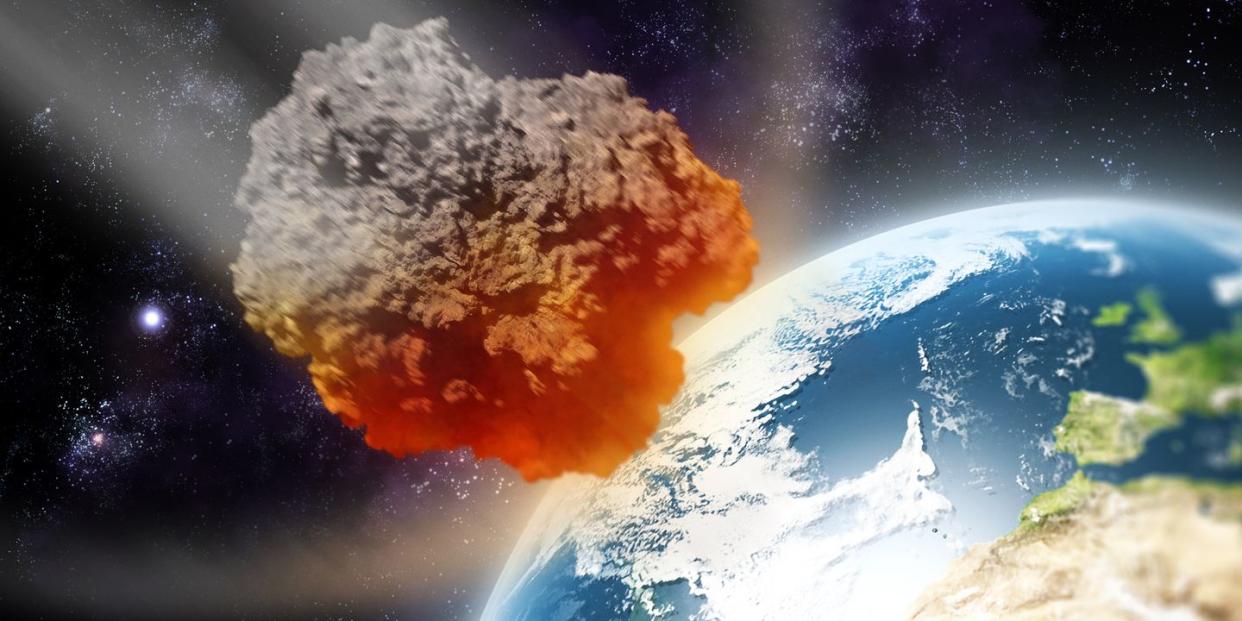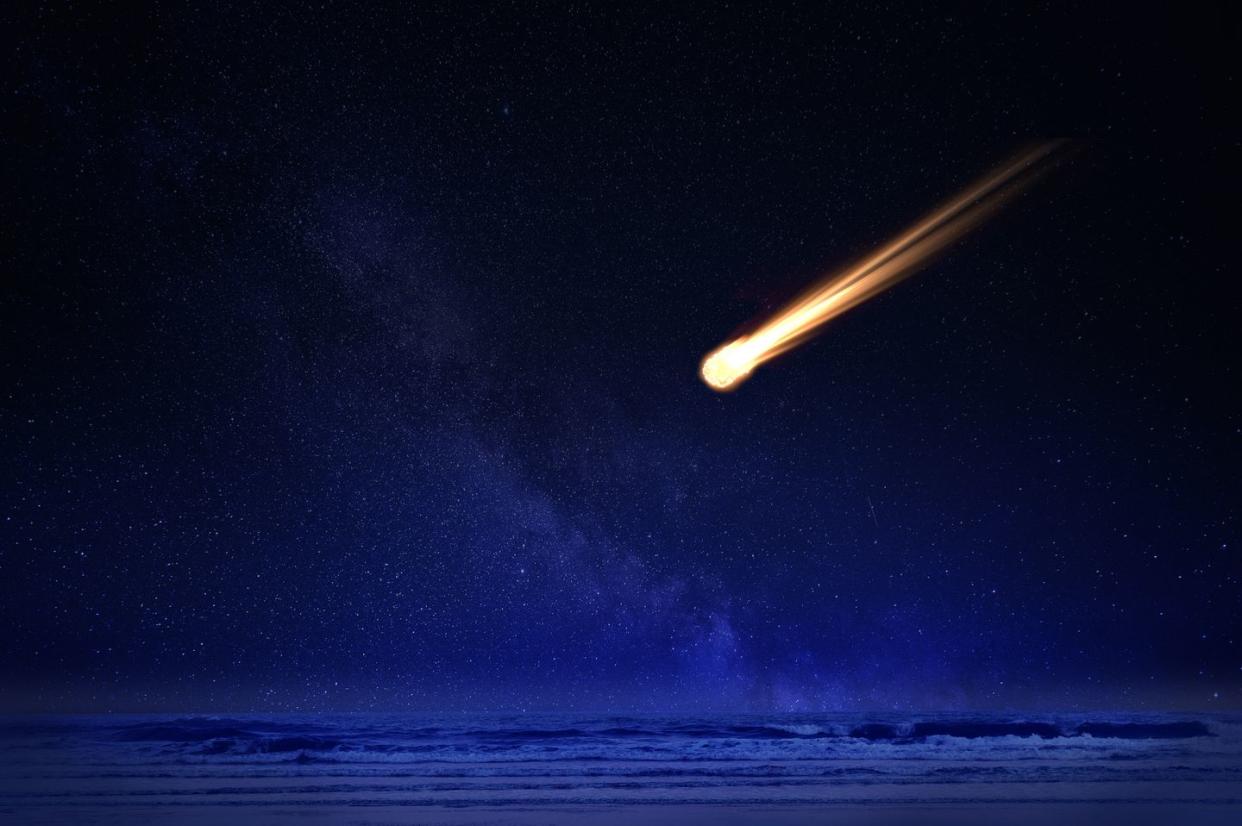Astronomers: Let’s Fish a Meteorite From the Ocean ... With a Mattress-Sized Magnet

In 2014, the first-known interstellar object, a meteor called CNEOS 2014-01-08, exploded over the Pacific Ocean north of Papua New Guinea.
Harvard scientists are raising money for an expedition to retrieve fragments of the meteor using a magnetic sled.
The Department of Defense has been tight-lipped about the exact coordinates of the meteor’s fireball. The agency detected the space rock using a missile detection system.
On January 8, 2014, a meteor traveling about 133,000 miles per hour exploded over the Pacific Ocean just north of Papua New Guinea, releasing energy equivalent to 110 tons of TNT and raining debris into the water below.
Now, after years of contentious debate, scientists are fairly certain that this space rock—formal name, CNEOS 2014-01-08—is the first-known meteor to have originated outside of our solar system, beating the previous record holder, Oumuamua, by three years.
☄️ You love space. So do we. Let’s explore the cosmos together—join Pop Mech Pro.
Harvard scientists Amir Siraj and Avi Loeb were the first to posit the meteor’s interstellar origin, after calculating its immense speed.
“Between Earth and the sun, the local cosmic speed limit is about 42 kilometers per second,” Siraj tells Popular Mechanics. “Anything moving faster than that is on an escape trajectory; it’s unbound by the sun’s gravity.” CNEOS 2014-01-08 was traveling 60 kilometers per second when it struck the Earth.
The other notable feature of CNEOS 2014-01-08 was how tough it appeared to be. By analyzing the meteor’s speed, altitude, and the fireball it created as it disintegrated, Siraj and Loeb were able to determine that the meteor broke apart at an astounding 113 megapascals (MPa) of pressure, demonstrating a material strength five times higher than stony meteorites, and two times that of iron meteorites.
“It’s an unprecedented level of material strength,” Siraj says. It also suggests that CNEOS 2014-01-08 contains metals, including ferro-magnetic ones like iron. Feasibly, this means that a giant magnet could be dragged across the ocean floor to retrieve pieces of the interstellar meteor. And that’s just what Siraj and Loeb plan to do.
The scientists’ Galileo Project will be a $1.6 million fishing expedition unlike any other. Once funds are secured, the research team will head to Papua New Guinea’s Bismarck Sea, where it will lower a mattress-sized magnetic “sled” about one mile underwater. Using a long cable, the scientists will trawl the ocean floor for ten days, collecting any pieces of CNEOS 2014-01-08 that might remain.

It’s not as crazy as it sounds; in 2018, scientists collected fragments of meteorites from the ocean off the coast of Oregon using magnets and scoops. Siraj says the Galileo Project is consulting with members of the Nautilus Meteor Hunt to inform its own expedition.
Meanwhile, a few obstacles remain for the Galileo team to overcome. Loeb says it still needs permission from Papua New Guinea to conduct scientific work in its waters. The team is also hopeful that the Department of Defense—the agency that first recorded CNEOS 2014-01-08 using a missile detection system—might provide more precise coordinates as to the meteor’s explosion, rather than the 10-mile radius it’s currently released. And then there’s the money. According to Loeb, the team has raised about a third of its mission’s hefty price tag.
But the ocean-trawling expedition, according to the researchers, is much more reasonable than any alternative methods to secure an interstellar object, which would require launching a spacecraft to intercept one. A space mission to the closest planetary system, Alpha Centauri, would take thousands of years and cost billions of dollars. A million-dollar journey to the bottom of the Pacific, comparatively, “is like the discount of the century,” jokes Siraj.
🌌 More Far-Out Stories You’ll Love
The Pentagon Just Confirmed the First-Ever Interstellar Visitor to Earth
A Newly Discovered Asteroid Shares Earth’s Orbit (And Could Be Key to Space Travel)
Supergiant Star Betelgeuse Blew Its Top in a Violent Explosion, Baffling Scientists
A Russian Spy Satellite Is Stalking a U.S. Military Satellite, And the Pentagon Is NOT Happy
Getting his hands on this emissary from interstellar space would “help contextualize the chemistry of our own solar system in a brand new way,” Siraj says. It would also “answer that ‘age old question: just how special is our solar system?’”
Loeb has more fantastical visions. “The composition and speed [of the meteor] suggest it could be artificial in origin—like a spacecraft,” he tells Popular Mechanics. “My hope is we run into a big piece, and that there will be buttons on it. I want to push one.”
If the Galileo Project does indeed turn up a piece of alien hardware, Loeb has already committed to lending it to the Museum of Modern Art for an exhibit. “That really would be a piece of modern art,” he says.
You Might Also Like
